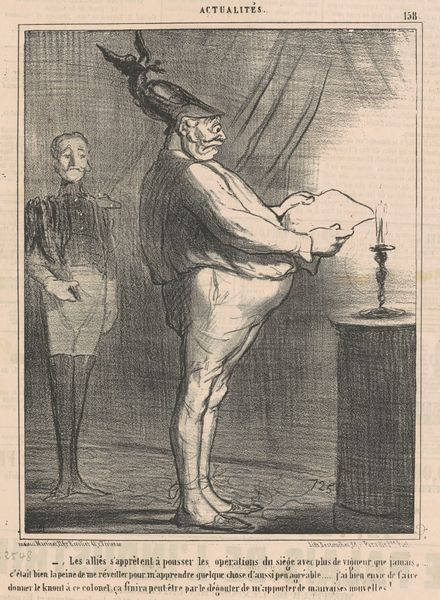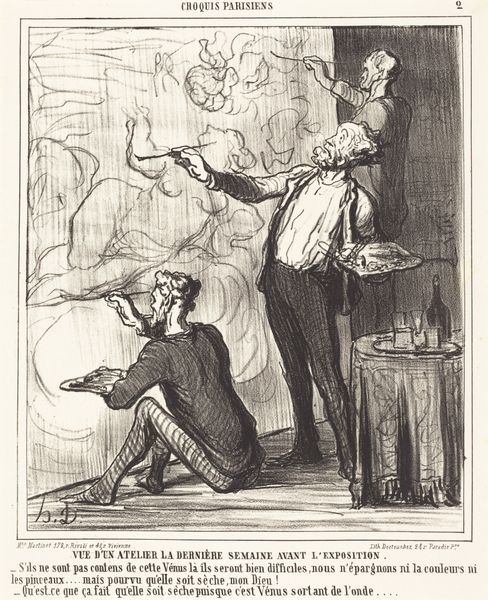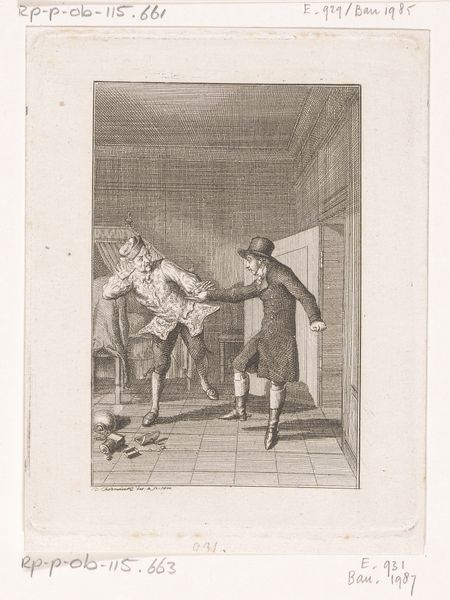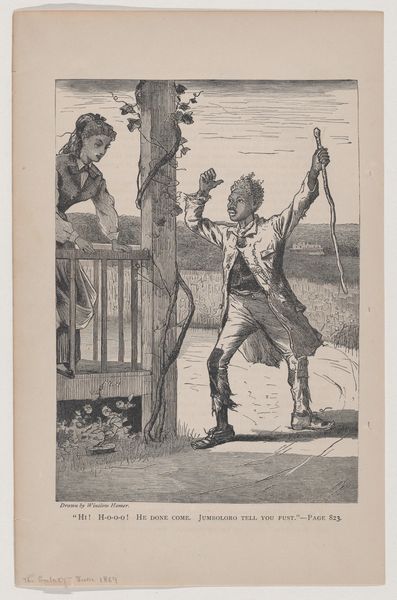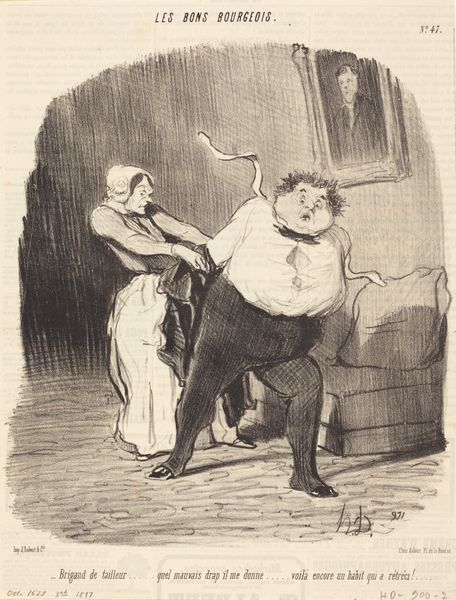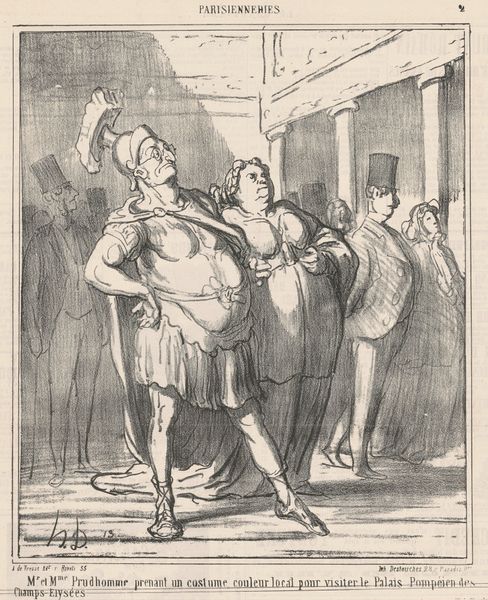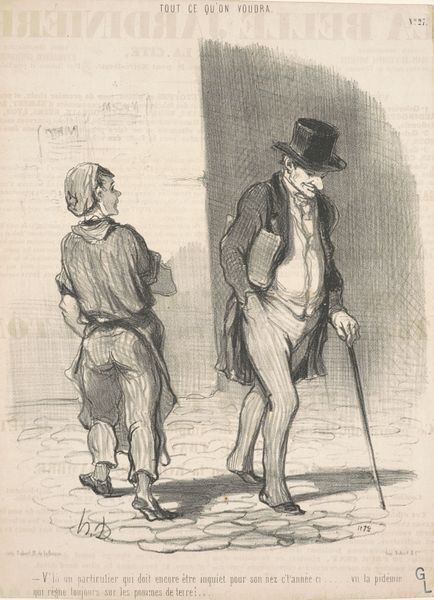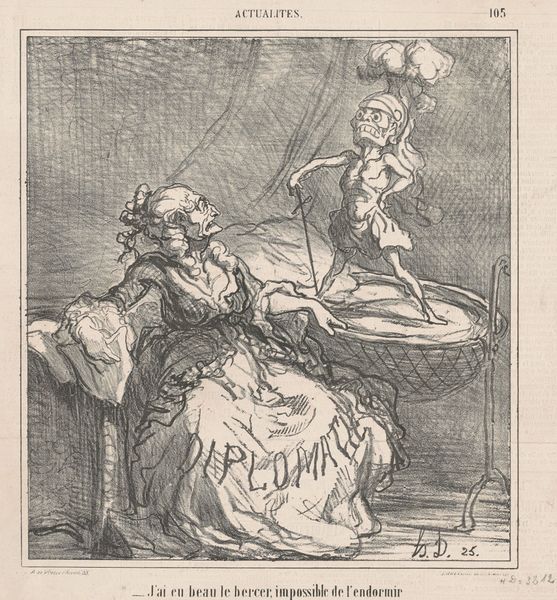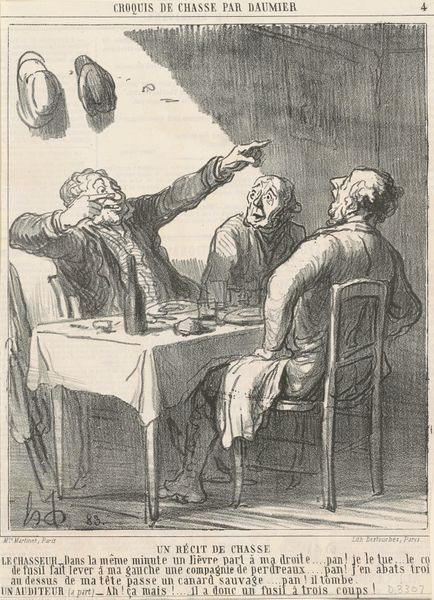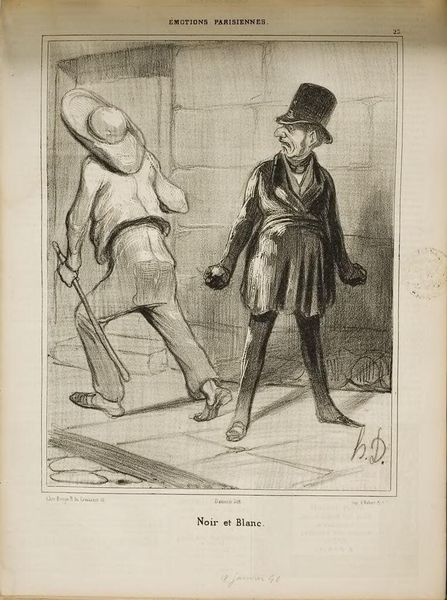
lithograph, print
#
quirky sketch
#
lithograph
# print
#
caricature
#
old engraving style
#
sketch book
#
personal sketchbook
#
idea generation sketch
#
sketchwork
#
romanticism
#
pen-ink sketch
#
sketchbook drawing
#
genre-painting
#
storyboard and sketchbook work
#
sketchbook art
Copyright: National Gallery of Art: CC0 1.0
Honoré Daumier's print presents a man jolted awake, a scene steeped in symbols of domestic unease. The candle, held aloft by the woman, casts a stark light, a motif echoing through art history, from Vanitas paintings to nocturnal scenes by Rembrandt, illuminating truths yet also obscuring deeper shadows. The man's posture, his hand raised as if warding off a blow, speaks to a primal fear, reminiscent of figures in ancient Greek tragedies caught in moments of terrible realization. His connection with the table could be a symbol of a pre-modern spiritist practice. The striking of the foot reminds us of the 'baubo' gesture, a connection between the female body and the underworld, an ambiguous gesture that combines the sacred and the profane. Here, Daumier taps into a collective memory, a shared understanding of the home not just as a refuge but as a stage for psychological dramas, where the mundane objects of our lives become charged with unspoken anxieties. This is a powerful force engaging viewers on a deep, subconscious level. It is clear that symbols such as the Baubo gesture, the light, and the stage-like composition, are continually resurfacing, evolving, and taking on new meanings in different historical contexts.
Comments
No comments
Be the first to comment and join the conversation on the ultimate creative platform.


